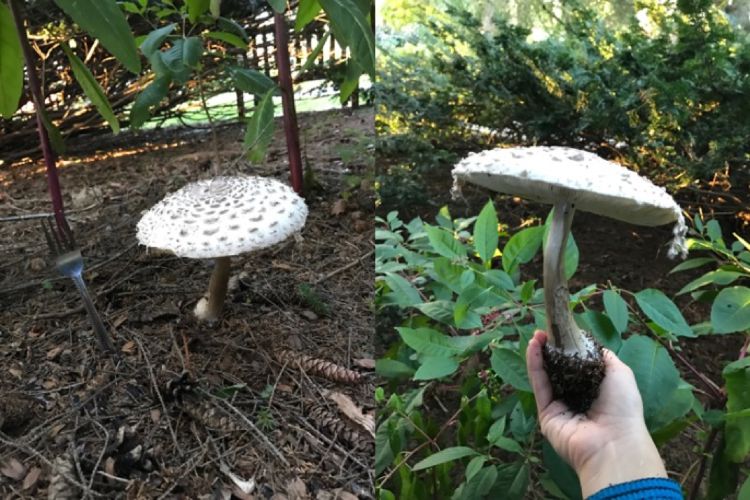Chlorophyllum Rhacodes
Saprobic; typically growing in troops or fairy rings in disturbed-ground areas like roadsides, gardens, and the edges of fields. Often near conifers.

- Ecology: Saprobic; typically growing in troops or fairy rings in disturbed-ground areas like roadsides, gardens, and the edges of fields. Often near conifers. C. rhacodes fruits in fall and it is widely distributed.
- Morphology: Cap: 5-20 cm; dry; convex to nearly round when young, becoming flat or very broadly bell-shaped; at first bald and brownish but soon breaking up so that the center remains smooth (or cracked) and brown, but the rest of the surface consists of shaggy scales with brownish tips over a whitish background.
- Gills: Free from the stem; close; white or when mature pale brownish
- Stem: 10-20 cm long, 1-3 cm thick; with a bulbous base that sometimes has a prominent rim at the top of the bulb; bald; white, bruising and discoloring brownish; with a high, double-edged, moveable ring.
- Flesh: Whitish throughout, but typically turning pinkish orange, then slowly brownish when sliced; thick.
- Spore print: White.
- Microscopic features: Spores 6-13 x 5-9 um; smooth; ellipsoid; dextrinoid and with a small pore. Cheilocystidia broadly clavate to clavate.


Source:
- Kuo, M., & Methven, A. S. (2014). Mushrooms of the Midwest. University of Illinois Press.



 Print
Print Email
Email



